Content
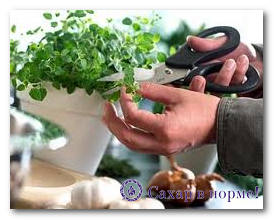 Good day! The topic of sweets and sugar substitutes is one of the most popular among people with diabetes and overweight.
Good day! The topic of sweets and sugar substitutes is one of the most popular among people with diabetes and overweight.
There is a lot of conflicting information on this subject, but the undisputed leaders among sugar substitutes are natural ones.
Today we will again talk about stevia, but already about growing from seeds at home, how to purchase seeds and grow it in the country and at home, planting and care, and in the end we will learn how to make syrup.
I hope the material will be useful not only for avid gardeners, but also for everyone who is engaged in home floriculture. Try growing your own stevia and we'll help you!
Growing stevia honey at home
Today's article is dedicated to all those who prefer to see at home or in the country not only beautiful, but also useful plants. Is it possible to grow stevia at home so that this famous inhabitant of the southern latitudes delights us with its juicy sweet leaves?
Of course, many gardeners have long cultivated this herb, known for its taste and healing properties, on their windowsills and summer cottages.
How to buy stevia seeds
Since we will grow stevia directly from seeds, it is worth finding out in advance where to get them.
This plant belongs to the family of Asteraceae or Asteraceae, and, despite the prevailing opinion that only a small percentage of seeds germinate, stevia is cultivated in northern countries very successfully, but more often as an annual plant.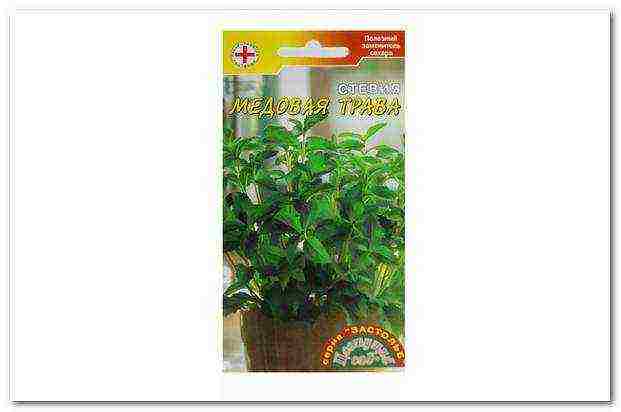
Small stevia seeds - only 0.5 mm wide and 4 mm long - are easy to purchase online and receive by mail.
On specialized sites, you can find different packaging and, accordingly, you can find a wide range of prices for this plant. The minimum number of seeds in one package is 7-10 pieces with a guarantee of a high percentage of germination.
Today, the questions of where and how to buy stevia seeds are no longer there - we order an exotic plant and receive it by mail!
Stevia herb: plant hardiness
But to grow stevia outdoors, there are a few important things to keep in mind.
The frost resistance of this herb is considered low and not suitable for our latitudes, which is why growing it in the country is fraught with certain difficulties.
How to sow stevia seeds
Most often, it is recommended to purchase already grown stevia seedlings, especially if there is no experience in growing plants from seeds - this method is considered more reliable.
But if you want to try your hand, then it's time to find out what you should pay special attention to when planting this herb with seeds.
Stevia seed selection
To sow stevia with the maximum percentage of germination, we select the material using the windage method, that is, we simply release each seed and watch how it falls.
- If it is fast and straight down, the seed is good.
- If it turns and turns over, it is better not to plant it, most likely it will not give seedlings.
What land to use for sowing stevia
The soil for the successful cultivation of stevia should consist of black soil and humus in a ratio of 3: 1.
- If it seems that the soil is too clayey, add sand.
- Loam with compost is ideal.
- You can also purchase ready-made soil, since the surface roots of stevia are very sensitive to various foreign inclusions.
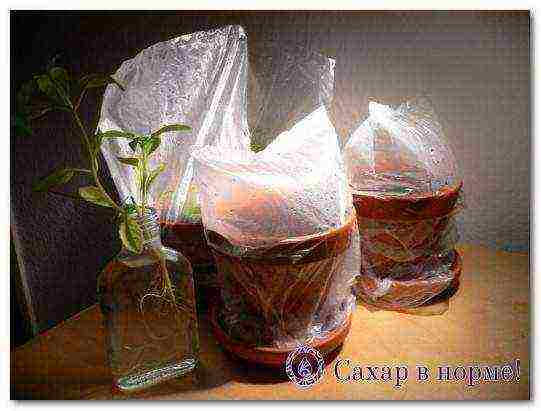
Before planting (we produce it in mid-March), moisten the seeds with warm water and lay them out on a clean cloth or paper until they are completely dry.
Due to their small size, it is not worth covering, that is, covering the seeds after planting with soil. Simply put the stevia on the surface of wet soil, sprinkle with water and cover with plastic wrap, a cut from a plastic bottle or a glass jar of a suitable diameter.
From time to time we moisten the soil by spraying and keep it in a well-lit place in a warm place - the temperature should not fall below 22-25 ° C. In such favorable conditions, seeds germinate within 5-7 days.
We finish sowing stevia no later than mid-May.
Back to content Honey herb seedlings
When the first shoots appear under the film or can, we pay attention so that weeds are not among them. It will be easy to distinguish them from stevia seedlings: the latter grow very slowly and are very small in size.
If all the seeds have sprung up and it seems that they grow too often, we dive them through one. We transplant young plants into separate dishes with the same soil composition so that they take root well.
If we do not plan to grow stevia in the open field, we plant the sprouts immediately in a wide, shallow pot, since the root system of this grass, as we remember, is superficial and grows in breadth.
The resulting seedlings are best dived at the age of 2 months either into a greenhouse or into pots - it is more convenient for many to monitor the microclimate of the plant.
Just remember that in this case, the pot must be prepared in advance and designed for an adult plant.
We also cover the planted seedlings with a jar or plastic bottle to create an optimal level of heat and humidity.
When to plant seedlings in open ground
Landing in open ground is allowed no earlier than mid or even the end of June, so that the soil temperature is 10-15 ° C, no less.
In addition, two weeks before the intended planting, the stevia seedlings must be hardened. To do this, we open the one and a half month old plants and expose them to the open air, first for a couple of hours, gradually increasing the "airing" time.
After the seedlings get used to being outside the shelter throughout the day, we transplant them into open ground. With such preparation, it will not be so difficult to grow stevia in the country, despite its low frost resistance.
Transplanting stevia from open ground
At the end of August and the beginning of September, the plants will need to be dug up and transplanted into a pot and taken to a greenhouse or brought into the house, since the minimum temperature at which the plant does not die is 4 ° C of heat.
If there are plans to preserve live grass during the winter and return it to open ground at the beginning of summer, you should not risk it - we remove the stevia from drafts and frosts much earlier.
We monitor the PH indicator: it should be neutral. If the soil is too acidic or, conversely, alkaline, we continue to keep stevia in pots even outdoors, without planting it in the ground.
Stevia seedlings in the open field
Stevia seedlings are very whimsical and capricious in home care. She does not like dry soil, but does not tolerate waterlogging, her roots immediately begin to rot.
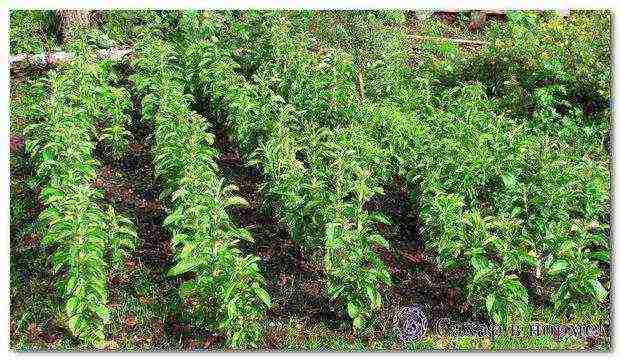
While the seedlings are quite small, we have just dived them and we are still far from planting in open ground, we arrange a mini-greenhouse for them. It should be humid and very warm under glass or film. If it is not possible to determine the temperature inside, it is better to use a special thermometer.
- Optimal for the successful cultivation of honey stevia are 25-26 ° C.
We keep the pots on the sunniest and warmest windowsills, regularly, 2-3 times a day, spraying the soil with warm water. Watering should be done only pointwise and occasionally, so as not to overmoisten the seedlings.
Stevia honey dressing
After a month, the stevia can be transferred to the greenhouse.There we try to keep young plants in the same microclimate - warm and humid. At the same time, it's time to start feeding.
To grow stevia in a greenhouse or at home, we spray the plants once every two weeks, alternating organic and mineral fertilizers. We breed them according to the instructions.
Drop off site
While young plants are growing stronger, we prepare a place on the site, if there is a desire and opportunity to grow honey stevia in the open field.
The place should be selected taking into account all the needs of the plant - in no case low-lying, so that moisture does not accumulate, it should be well lit throughout the day. There should be no other plants nearby, we fix a separate area for the stevia.
Pruning adult plants
When the shoots in the greenhouse or at home on the windowsill reach 20 cm, and after planting 2 months have already passed, we trim the tops. The best time to do this is from mid-May to early June. Thus, we will contribute to the appearance of lateral shoots, creating a shrub in several branches, which can be used for food in the fall.
We cut off the shoot so that a part of it with a couple of internodes remains on the adult plant.
Rooting stevia cuttings
We are not in a hurry to throw away the remaining cuttings, because with their help, the reproduction of stevia is faster and more reliable than by planting seeds.
Stevia cuttings are rooted as follows:
- put them in a jar with slightly sweetened water (1 tsp sugar per 1 liter);
- cover the container with an opaque material, preferably black. Roots appear faster in the dark;
- so that the stalk is stable, we fix it in a cardboard stand placed on the jar so that the leaves do not sink into the water;
- every 3 days we change the sweet solution, and for the early appearance of roots we spray the leaves with it.
With this home care, it will be possible to transplant stevia into the soil in two weeks.
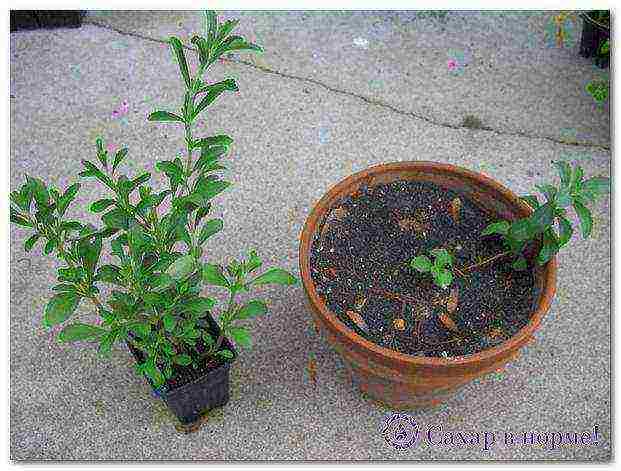
We keep the newly planted plant under a film or glass, and open it no earlier than a week later. To take root stevia will need high air and soil humidity.
Agrotechnology of stevia involves transplanting it into open ground after at least two months from the moment of seed germination. In the air, we continue to regularly spray and water the pre-hardened plant to achieve maximum sweetness with the leaves, because stevia grown in the country, and not at home, will be the sweetest.
Now that we figured out what planting and caring for this plant is, we will find out what stevia harvesting can be.
Harvesting honey stevia
Stevia is known to be an excellent natural sugar substitute that does not cause an increase in blood glucose levels. As a consequence, it can be used by both types of diabetics.
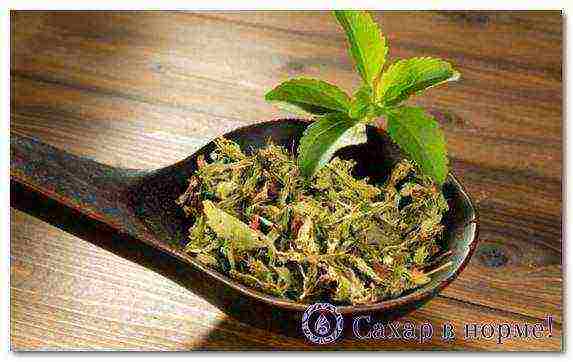
In addition, honey grass is several hundred times sweeter than regular sugar, so not much is needed to sweeten drinks and food.
There are several ways to harvest stevia.
Stevia Drying
Drying and chopping leaves is one of the easiest harvesting methods.
- When the time comes to harvest, we cut off the stems with a pruner and remove the leaves from them.
- We dry them in any convenient way - in the sun, in the oven with low heat, or in a drying cabinet.
The main thing is not to overexpose them at high temperatures for more than 12 hours, so that the sweetness does not disappear.
Grind the dried leaves in a regular coffee grinder or blender bowl, pour into a jar and store for at least a few years.
How to use dried stevia
- If necessary, add them to the drink, brew them and use them as herbal tea.
- And for baking or other stevia-based dessert, pour 80-100 g of chopped leaf into a linen bag and brew 1 liter of boiling water. In 10-12 hours we will have a sweet broth.
- If you need to add stevia to porridge, batter or dairy products, you don't even have to brew it, but simply grind it to a fine powder. We put it right like this.
But besides simple drying of the leaves, stevia can be prepared for the winter in several more ways - by boiling syrup or extract.
Stevia extract recipes
You can make an extract from stevia leaves at home with both alcohol and water. The difference will be in the sweetness - in the first case, it will be even more noticeable.
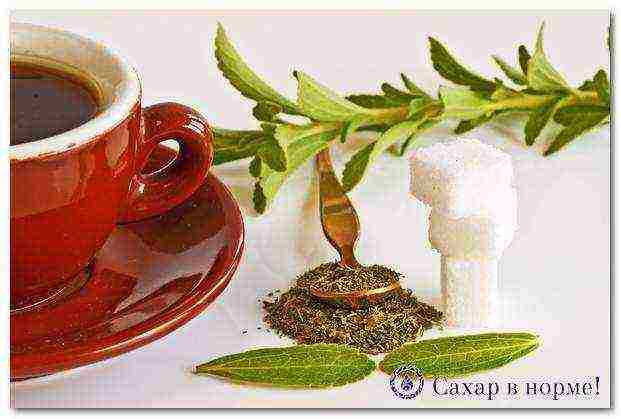
We stock up on dry leaves and vodka or other strong alcohol, such as whiskey or brandy.
- Fill the dried stevia leaves with alcohol in a ratio of 1:10 and leave for 24 hours.
- Then we filter it and we can use it directly, diluting it with clean water, or we can heat the resulting liquid, but not bring it to a boil, this will help reduce the alcohol content.
We make an aqueous extract in a similar way.
- Fill the leaves with water in a ratio of 1: 5 and begin to evaporate over very low heat.
- We hold this for 15 minutes, then filter and resume heating until the volume of liquid decreases 5 times.
Homemade stevia syrup
Homemade stevia syrup is made in the same way.
- We keep the aqueous extract on fire until it thickens to the desired consistency.
We seal the resulting stevia syrup in a sterile jar and use it as needed, adding it to baked goods or drinks.
Now you know if you can grow stevia at home, how best to do it, and what its wonderful honey leaves can be useful for!
Since this plant is a real storehouse of useful substances, you should not be afraid of failure and postpone planting - we are trying to organize "sugar plantations" on our windowsill right now!
With warmth and care, endocrinologist Dilyara Lebedeva
Stevia or honey herb. From her and breathes magic and mystery. However, this is a completely natural and far from rare inhabitant of many garden plots and even balconies, pots or flower beds. She is not only able to decorate the garden with her presence, but also has a lot of useful properties.
Growing stevia at home and outdoors
What is Stevia
Stevia is a whole genus of perennials from the Astrov family, which unites more than 250 species of all kinds of shrubs and herbs. Their homeland is the plains and mountainous regions of America. The most popular type of stevia is honey, which is cultivated in summer cottages. This plant was first studied by the botanist Stevus in the 16th century, after which it was named. The fact that stevia honey is used as food by the aborigines was established at one time by the scientist Antonio Bertoni during his expedition to Paraguay. He noticed that the Indians called this plant "Guarani" and prepared delicious and sweet drinks from it.
Stevia is a natural sugar substitute
The fact is that stevia is a natural substitute for sugar: a couple of leaves of the herb are enough to sweeten a cup of tea. Its leaves contain a substance that in the twentieth century was called "stevioside" - it is hundreds of times sweeter than ordinary sugar. By the way, stevioside is recognized as the sweetest natural product in the whole world.
Honey stevia is a semi-shrub up to 80 cm high, abundantly branching, with small paired leaves and a developed root system. It blooms with small white flowers. It is now widely used in food preparation in Asian countries and South America.
The most popular type of stevia is honey stevia
Growing conditions
Stevia respects warmth and sunlight, so it should grow in a well-lit place where there is protection from drafts and gusts of wind, and the ideal air temperature for it should be at least 22 degrees. It is also worth remembering that you cannot plant stevia in lowlands, where water can accumulate - its excess for the plant is destructive.
Stevia is relatively not picky about the soil - it can grow everywhere, as long as the soil is not too salty. The ideal soil for her is light sandy loam and sandy substrates with the addition of organic fertilizers.
Stevia respects warmth and sunshine
Stevia respects compost and humus, but you should be careful with peat, as it grows poorly on it.
Legumes are good predecessors for her. The soil pH should be in the range of 5.5-6. If only clay soil is present in the garden, then sod, humus and coarse sand should be added to it so that it becomes loose and light - such as Stevia loves.
Growing stevia
Stevia seeds
Growing stevia from seeds is not an easy task. This is a very moody plant. Most seeds end up unsuitable for growing. The seedling period for stevia lasts about 2 months, so they start sowing seeds in April.
- Prepare boxes and soil for seeding.
Preparing the soil and container for planting
- Make small dimples on the surface of the ground and place 2-3 seeds in each.
Planting seeds
- Lightly sprinkle the seed dimples with soil - the layer should be no more than 3 cm.
Sprinkle with earth
- Moisten the soil surface with water using a spray bottle and cover with foil or glass.
How to create a greenhouse effect
- Put the box with future seedlings under a UV lamp. The first days do not turn it off, even at night.
- Provide an air temperature of at least 25 degrees in the room with boxes.
- The first shoots will appear in 1-2 weeks. After that, immediately remove the cover from the seedlings.
- After 3 weeks, reduce the operating time of the UV lamp to 15 hours per day.
- When the seedlings have strong leaves, it is thinned out, removing frail plants.
The first sprouts of stevia
Stevia can also be grown from cuttings. This method is much simpler than the previous one, but it will require a mother plant of at least 2 months. Cut off the cuttings-tops of the shoots with a length of about 10 cm should be in May-June. Before rooting, the lower leaves are removed from it, then they are dug into the ground to a depth of 6 cm, sprayed with water and covered with a jar or film. At first, the cutting and the soil around it are sprayed several times a day with a spray bottle. Rooting takes place within 10 days.
Growing stevia from seeds
Video - Growing stevia seedlings
Seedling care
While the plants are very small, they are watered very carefully, while controlling the humidity - the soil should not be soggy. Ideally, if you manage to organize bottom watering, that is, put the box with seedlings in the water for a while.
There should be no drafts on the windowsill where the seedlings are standing, and it is also important to remove the rest of the houseplants - stevia does not like neighbors.
When small stevia grow up and stretch up to 12 cm, their tops are shortened by 3-4 cm
When small stevia grow up and stretch up to 12 cm, their tops are shortened by 3-4 cm - thanks to this procedure, the plants will begin to branch well.
If you plan to grow stevia in an apartment, then at the end of the seedling period, the bushes need to be transplanted into separate pots with a diameter of at least 10 cm.
Growing stevia in pots
Open ground transplant
Moving stevia to the street is one of the most crucial moments. Wrong actions can ruin all your work. Before the plants finally move to the street, it is important to harden them. To do this, the seedlings are first dived into separate pots and then put them outside for several hours every day. The weather at this time should be warm and sunny. Each time, young stevia stays on the street longer and longer.
Planting stevia in the ground is done when the risk of frost is minimal.
Landing in the ground is carried out when the risk of frost is minimal, and the air temperature during the day is at least 18 degrees. The procedure is best done in the evening.
- We dig the site for stevia well, remove the weeds.
Digging up a site for stevia
- We dig holes up to 8 cm deep at a distance of at least 40 cm from each other.
- We apply organic fertilizers to the pits (about 0.5 kg of humus).
- We take out the seedling from the pot along with a lump of earth and lower it into the hole, sprinkle it with soil and tamp it.
Planting stevia outdoors
- Water or spray the soil a little from a spray bottle.
Transplanting stevia into open ground
For the first time, until the plants take root, they are covered with a film. Since the roots of stevia are located close to the surface, the soil around the plant is mulched so that they do not dry out.
Video - How to properly plant stevia in the ground
Stevia care
Stevia is a lady with character. So that she does not die, it is important to provide her with good growing conditions.
| Watering | No more than 3-4 times a week, depending on the weather. At the same time, it is important to ensure that the plant is not overflowed, but also does not suffer from a lack of water. At home, it is better to water stevia with boiled water. |
| Weeding | A very important factor, as stevia does not like neighbors. All weeds around the plants are carefully removed |
| Priming | After each watering or rain, it is necessary to loosen |
| Top dressing | It is carried out 2 times a month with nitrogen-containing fertilizers. Humus or compost is applied in the fall |
| Pruning | If stevia grows in an apartment, then it is important to prune it every six months so that the crown branches well. Outdoor plants are pinched as needed. It is important to periodically cut off some of the leaves so that the bushes are constantly updated. To increase the yield, all flowers of the stevia are removed. |
| Wintering | The plant hibernates very poorly in the Russian climate, more often it simply dies, so for the winter it is best to dig it up and bring it into the house. In some regions, at your own peril and risk, stevia can be left on the street, covered with foil |
With all the desire in Russia, honey grass is very rarely able to grow to its full height - the climate is too cold. You can harvest the crop 4 months after sowing the seeds. Usually this is the beginning of autumn - at this time the plant prepares for wintering and begins to intensively store stevioside in the leaves.
You can harvest the crop 4 months after sowing the seeds.
Harvesting is quite simple - the stems of the plant are cut off and all the leaves are cut off from them, which are then dried in the sun or under a UV lamp.
It is important to know that stevia leaves cannot be dried for more than 12 hours, otherwise they will not be so sweet.
Secrets of growing stevia
Dried leaves keep well in closed containers for a long time.
Dried stevia leaves keep well in closed containers for a long time
Beneficial features
Honey herb has many beneficial properties, is widely used in medicine and is approved by the Ministry of Health.
Only 4 tablespoons of dried leaves of this plant can replace 1 cup of sugar.
- It is the best natural low-calorie sugar substitute for diabetics and people with metabolic disorders.
Stevia is the best natural low-calorie sugar substitute
- Stevia is used in dietetics and cosmetology.
- Honey grass is also used for the prevention and treatment of diseases of the cardiovascular system, gastrointestinal tract, to strengthen the immune system.
- If you drink tea from the leaves of honey grass regularly, then the level of cholesterol in the blood is reduced.
- The leaves of this plant contain a large number of vitamins and minerals.
- It is good to rinse the mouth with a decoction of stevia with gingivitis.
- It is a natural antiseptic and is good for sore throats.
- The plant speeds up wound healing and helps get rid of abscesses.
- Stevia is added to pastries and salads, and aromatic teas are prepared from it.
Aromatic teas are prepared with the addition of stevia
Stevia is a perennial herb that was brought to Russia from South America.This culture is also called honey grass, and this is justified, because stevia leaves are used as a natural substitute for sugar. This unremarkable culture is especially prized in folk medicine and can be grown both at home and in the garden.
Stevia. Cultivation and reproduction. Healing properties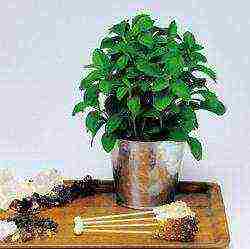 The leaves of the plant contain a lot of useful substances. For example, tea brewed from them, with prolonged use, is able to raise and strengthen the immune system. In addition, stevia is a natural sugar substitute (200 times sweeter than saccharin).
The leaves of the plant contain a lot of useful substances. For example, tea brewed from them, with prolonged use, is able to raise and strengthen the immune system. In addition, stevia is a natural sugar substitute (200 times sweeter than saccharin).
The use of the plant for cosmetic purposes also has a positive effect. Prepared masks and decoctions make the skin smoother and more elastic, and even out the complexion.
Stevia: growing, care, plantingThe seeds of the plant are sown in late January or early February. This applies to those seedlings that will subsequently be placed in the ground. It is advisable to apply fertilizer to the prepared soil, and sow the seeds themselves only on the surface of the earth, without sprinkling. Next, this place must be covered with foil or glass. When shoots appear, you need to carefully monitor so that the condensate accumulating on the surface of the shelter does not flood the shoots that have begun to form.
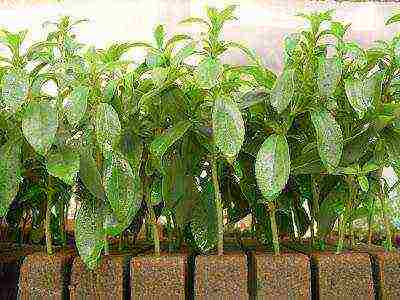 Stevia, the cultivation and care of which does not require the creation of any special conditions, quite easily takes root in our climatic zone. Most importantly, planting in the ground should be carried out only after the morning frosts have ended. Initially, the seedlings can be placed in a greenhouse or greenhouse.
Stevia, the cultivation and care of which does not require the creation of any special conditions, quite easily takes root in our climatic zone. Most importantly, planting in the ground should be carried out only after the morning frosts have ended. Initially, the seedlings can be placed in a greenhouse or greenhouse.
Young plants are best planted in the evening or in cloudy weather. After that, each of them must be watered abundantly. It is better to choose a sunny place for planting, but as much as possible protected from the wind, drafts have a detrimental effect on the growth of a plant such as stevia. Growing this culture in the garden requires mandatory feeding. Usually, a universal mineral fertilizer is used, which is suitable for vegetable or berry crops.
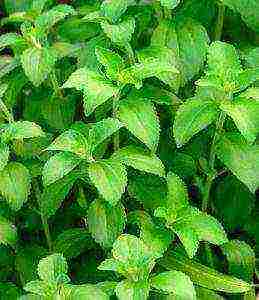 In the first year after planting, you should not expect the plant to grow vigorously. For the winter, it is dug up and stored in the basement. The leaves of the plant are collected at the beginning of flowering, the stems are cut about 6 cm from the ground.
In the first year after planting, you should not expect the plant to grow vigorously. For the winter, it is dug up and stored in the basement. The leaves of the plant are collected at the beginning of flowering, the stems are cut about 6 cm from the ground.
Growing stevia at home is easy all year round. The only difficulty that can be faced is the lack of lighting during the winter. In such conditions, the foliage of the plant becomes shallow, and the stems are strongly elongated. This problem can be easily solved by providing the culture with additional lighting. Indoor stevia must be adequately watered. And it is better to place the pot with it in a warm and bright place. In addition, pruning should be done about 4 months after planting to obtain more side shoots and leaves. Next, the bush is cut off every six months.
Stevia - a guide to growing at home from seed
5
(100%) voted
1
Stevia is one of the best natural sugar substitutes. No wonder 80% of the volume of its consumption falls on the country of long-livers - Japan. Today I will tell you how to grow stevia from seeds at home. This is especially true for residents of remote cities who find it difficult to purchase it in stores.
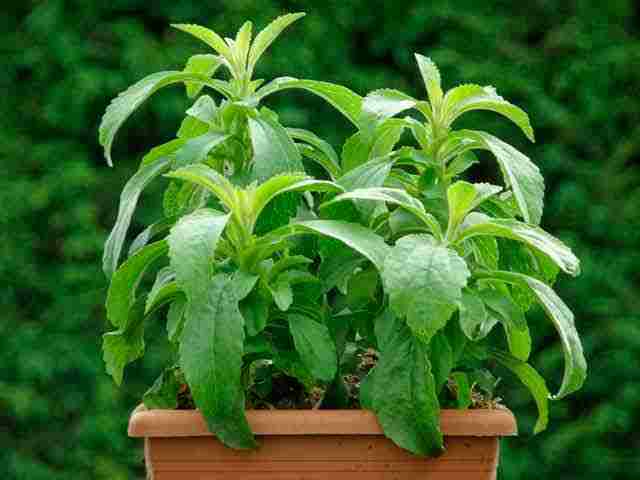
I want to warn you that the process of growing stevia is not easy. Honey grass is very whimsical and requires a lot of effort to grow successfully. Therefore, think ten times whether you need such labor costs. If yes, then read on with confidence - soon you will learn a lot of interesting and useful things.
Natural habitat of stevia
The homeland of the sweet herb is Paraguay. This country is in South America, so the main conditions for growing stevia are heat, sun and sand.
The optimum temperature is 23-28 degrees Celsius. Protection from strong winds and drafts is required.
Priming - sand or a mixture of sand with humus with a slightly acidic medium (pH 5.5-6). The ground should be loose and very light. Worst of all, stevia tolerates peat and calcareous soils.
Since there are no cold winters in South America, stevia cannot stand the cold. Therefore, it is grown either at home in a pot on a windowsill, or as an annual plant on the ground.
Preparing to grow stevia from seed
There are two main steps that, if done correctly, will ensure a good chance of grass germination.
- Soil preparation. To create a soil similar to the natural stevia soil, you need to mix sand, black soil and humus. You can buy them in garden centers, or you can get them yourself in the forest. To get humus, peel off the top layer of foliage. The soft layer to the hard soil layer is the humus. It is better to buy black soil and sand in the store. You need to mix the components - 2 parts of sand, one part of humus and 1% of black soil. By the way, on the Internet I saw ready-made soil mixtures specifically for growing honey grass.
- Stevia seeds... Seeds can be bought, and with long-term cultivation of grass, you can harvest it yourself as a crop and a nice bonus. When collecting, pay attention to the windage of the seeds. Raise the seed half a meter above the ground and drop it. If it falls quickly, the seed is suitable for growing. Slowly flying grain is a barren flower. They are unsuitable for further use.
How to grow stevia from seed at home
- The right time for seedlings is March - April. Even if you grow herbs at home, it is important to respect the seasons. If additional lighting is used, you can plant the stevia a month earlier.
- The growing container can be any. Beginners are advised not to start large boxes, but to limit themselves to a plastic cup.
- The thickness of the soil should be 10 cm.
- Pre-soak the seeds in warm water for 30 minutes. Then dry it a little.
- How to plant stevia seeds - make many small depressions in the soil, 5 millimeters each, and put 1-2 grains there. Cover with soil. Spray a little water on top from a spray bottle.
- The stevia plant is very fond of warmth and light. Therefore, cover the seedlings with a plastic or glass lid, and place in a very bright place. Ideally, it should be placed under a fluorescent lamp. But you can not put in direct sunlight.
- When the seedlings sprout, thin it out and remove the lid.
- Monitor soil moisture. It should be slightly damp. If you can, do bottom watering.
- When the grass reaches 5 cm, transplant it into seedling soil. It differs in the following - instead of one part of sand, you need to add one part of sod land. Plant the shoots at the depth of the first leaves.
- Once a week, you need to feed the stevia with mineral fertilizer.
- When the grass reaches 10-12 centimeters, cut off the top a little. Then it will start branching.
- The seedling period of stevia is 8 weeks.
- After that, you can plant it in a permanent habitat - in a flower pot. Don't forget to make the bottom drainage layer out of pebbles. Enough 3 centimeters. Next is the seedling soil.
Long-term stevia cultivation at home, care
If stevia is grown for a long time, it can be propagated using cuttings. It is much more effective and easier than using seeds. To do this, in an adult grass from 2 months old, cut off the shoot with leaves. The best time is May.
Plant him 4 centimeters deep. Water well and cover with a can or plastic wrap, creating a greenhouse. When warm and well-watered, the cuttings germinate within 10 days.
Remember that honey grass needs good light. But it can die from the direct rays of the sun. It also needs to be watered once or twice a week.
You can feed the plant with fertilizers twice a month.
How to grow stevia in the open field in the country
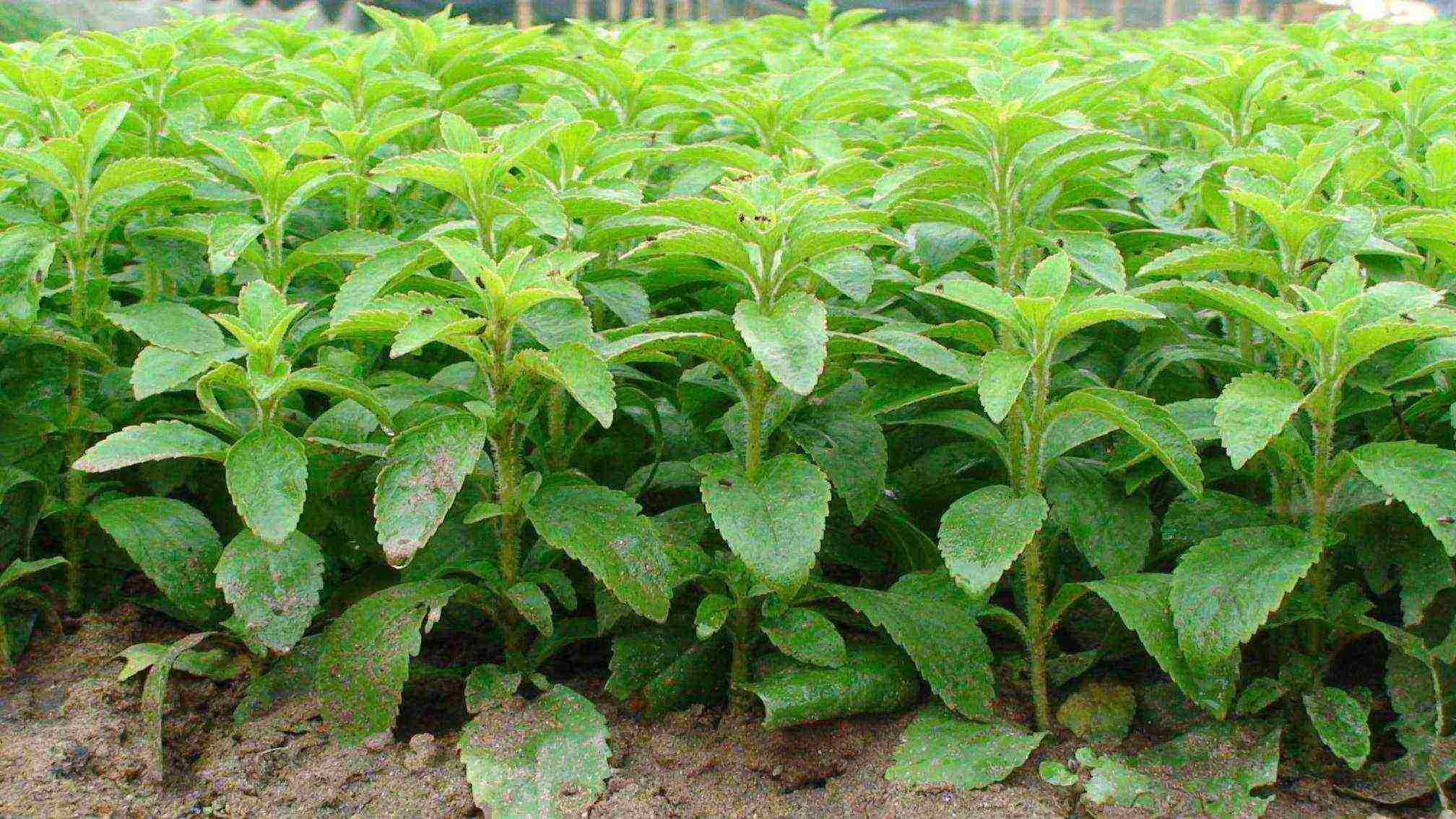
Prepare the seedlings as described above.
- It is necessary to plant stevia on the ground at an average daily temperature of 15-20 degrees.This is usually May or June.
- Dig up the soil and remove all weeds. Sweet grass is very difficult to tolerate being close to other plants.
- You need to plant seedlings to a depth of 6 centimeters. The distance between plants is about 30 centimeters. Add 300 grams of humus to each hole. After planting, pour a liter of warm water, and sprinkle with dry soil no higher than a third of the plant's height.
- Cover the grass planting area with agrofibre for 2 weeks.
When growing honey grass on the ground, it is important to remember about its cold intolerance. Therefore, for the winter, the roots will need to be dug up and stored until the next planting. This method of growing stevia is more effective than every year and from seeds, since every year the roots will grow stronger and give more and more yield.
Roots survive overwintering in a box with soil, at a temperature of 4 to 8 degrees, and at a humidity of about 80. Usually such conditions in the cellar or basement.
Harvesting
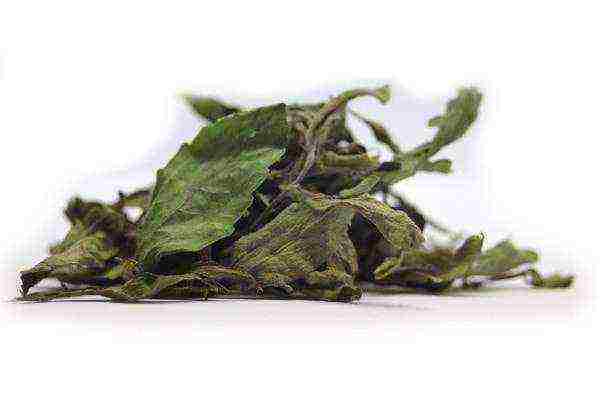
At the beginning of flowering, at 16 weeks after planting, you can already harvest the long-awaited harvest. This is usually the summer season. The stem of the stevia is cut at a height of 5 centimeters from the ground. The grass is tied in bunches and dried.
If the herb was grown for seed, the grains are harvested in September.
At the end of September, the roots can be dug up for storage if growing outdoors.
If you grow stevia at home, the leaves can be torn off all the time.
Drying the grass takes no more than 12 hours. And you can grind the leaves using a coffee grinder.
Read about the rules for using stevia and its sweetness in this article.


